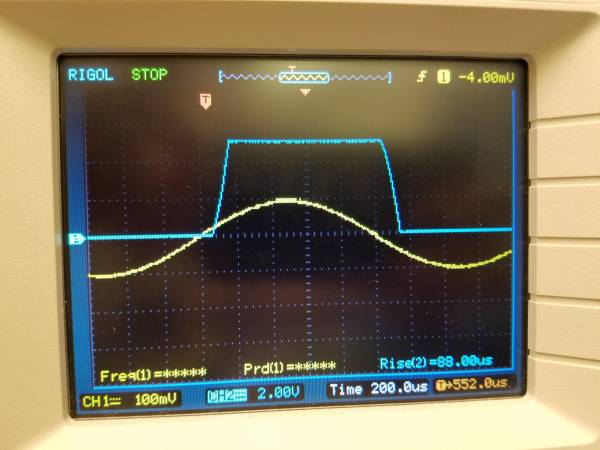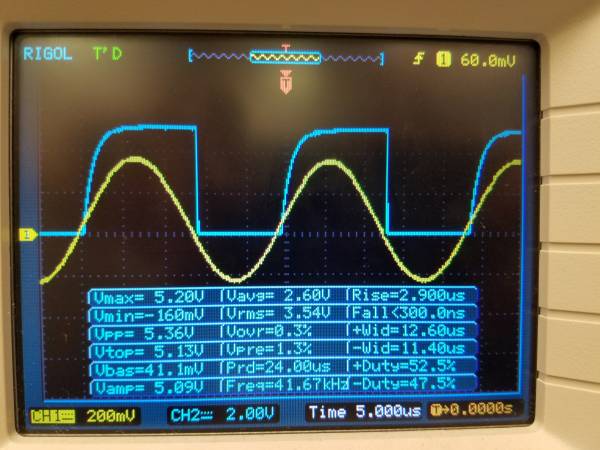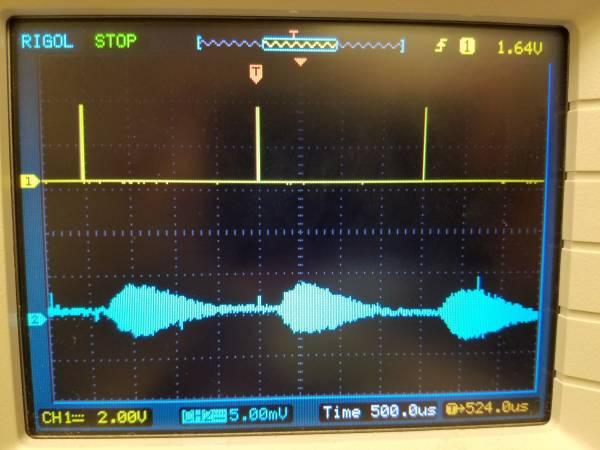This is an old revision of the document!
Wind Sensor Team Meeting-April 14, 2017
Attended: Mengyuan, Creighton, Scott
Acoustic Wind Sensor
- Updates:
- To Do:
Ultrasonic Wind Sensor
- Updates:
- Right before the CDR, made the realization that instead of going through the trouble of offsetting the received signal and using a threshold detector, we could keep the received signal centered at 0V and use a zero-crossing detector. This will simplify our design by quite a bit (we would forego the Schmitt trigger, threshold detectors, and possibly the amplifier). Also, the zero-crossing detector is relatively simple to build.
- Tested zero-crossing detector with oscilloscope:
- Initially tried to do it with an op-amp but we were limited by the slew rate. When we did find an op-amp with a high enough slew rate, the rise time was relatively slow (see below).
- We then decided to test it with our voltage comparator set at 0V, and it gave us much better results (see below).
- Delay 12.5us using nops:
- Not very reliable, a better approach would be to try and modify the timer's prescaler and initial value to achieve a 12.5us trigger.
- Receiver response when sending just 1 pulse:
- Sending just a single pulse through the emitter still causes a relatively long received signal. Also, there is an audible frequency (~3kHz) coming from the emitter
- DigitalWrite() vs. fastDigitalWrite():
- This is probably the time between the function call and the pin change, rather than the actual rise time, which is a physical property.
- digitalWrite() rise ~ 22ns
- digitalWriteFast() rise ~22ns
- Delay vs. Timer:
- The Timer was more precise and accurate whereas the delay had some relatively large fluctuations ~8%.
- TO Do:


